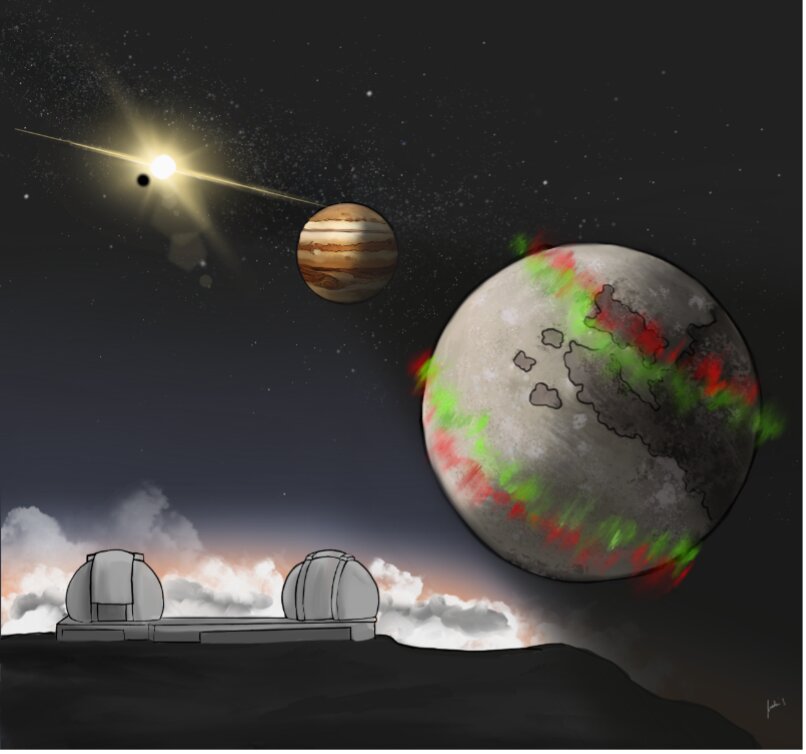A team of American researchers has discovered auroras on four of Jupiter’s largest moons. They emit in the visible wavelength range.

The discovery was made during observations carried out using the HIRES high-resolution spectrometer of the Keck Observatory, as well as spectrographs of the Large Binocular Telescope and the Apache Point Observatory. The researchers studied the four largest Jovian moons Io, Europa, Ganymede and Callisto (they are also called Galilean). The observations were made at a time when the moons were in the shadow of the gas giant, so that the telescopes would not be hindered by sunlight reflected from the surface.
Astronomers have managed to detect auroras on each of the Galilean moons. They are caused by Jupiter’s strong magnetic field. On all four moons, we can see the radiance caused by the emission of molecular oxygen, just like on our Earth. However, due to the extreme rarefaction of the atmospheres, the red color emits 15 times brighter than the usual green.

On Europa and Ganymede, oxygen emits not only in the visible, but also in the infrared range. This is the first time such a thing has been observed in the atmosphere of another body in the Solar System. As for Io, there are huge volcanic emissions there, reaching hundreds of kilometers in height. They contain sodium chloride and potassium chloride. Sodium gives the aurora Io a yellow-orange glow. Measurements also show that potassium glows in the infrared range. So far, this is the only body known to us with a similar feature.
New observations revealed the minimum amount of water in the atmospheres of the Galilean moons, which again raised the question of the presence of water vapor in them. It is also worth noting that since Jupiter’s magnetic field is tilted, the auroras on its moons change brightness as the planet rotates. In addition, their atmospheres can react to the rapid transition from the region of sunlight to the shadow of a gas giant. This is especially true for Io. The sodium in its atmosphere becomes very weak within 15 minutes of entering Jupiter’s shadow, but then it takes several hours to recover after coming out into sunlight.
According to the researchers, auroras make it possible to determine the presence of various elements in the atmospheres of Jupiter’s moons. Therefore, they intend to continue their observations. In the future, they may be joined by the James Webb Space Telescope.
According to https://phys.org
Follow us on Twitter to get the most interesting space news in time
https://twitter.com/ust_magazine

